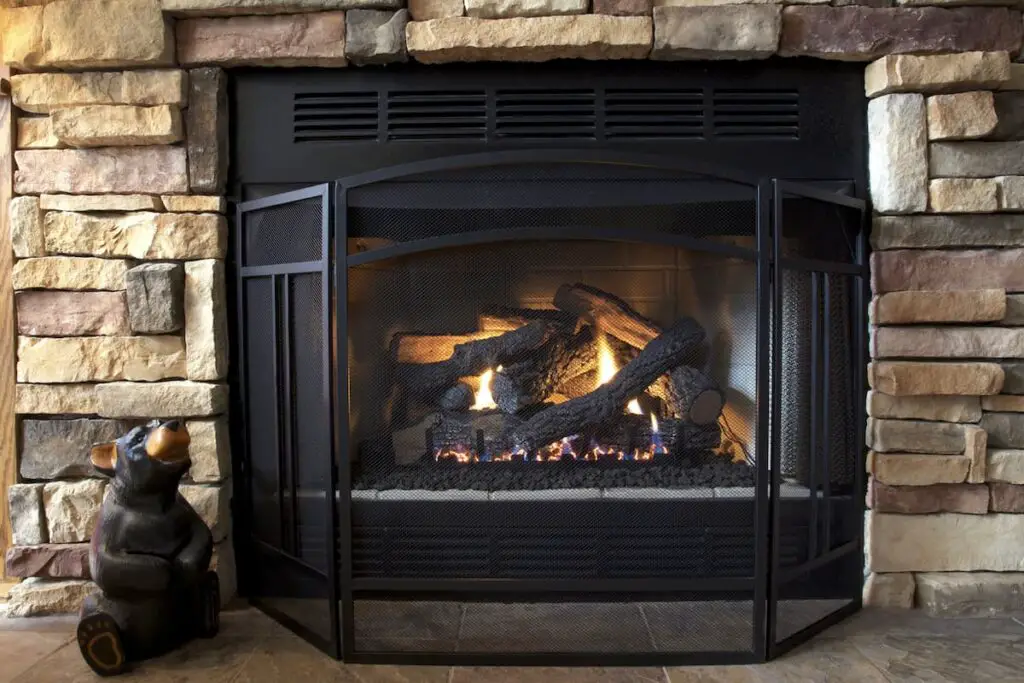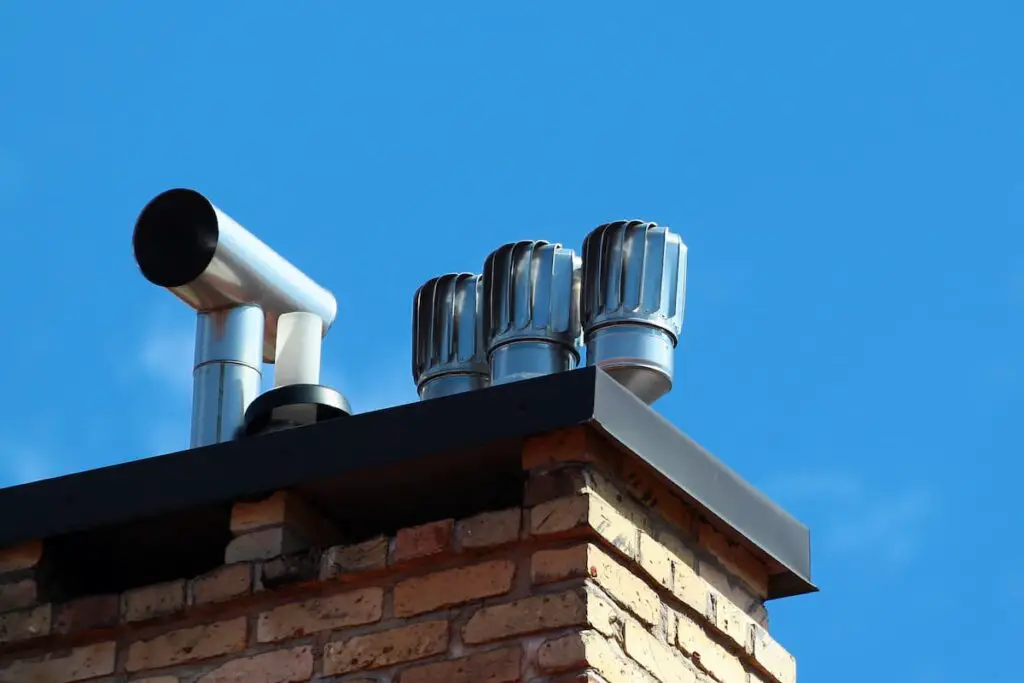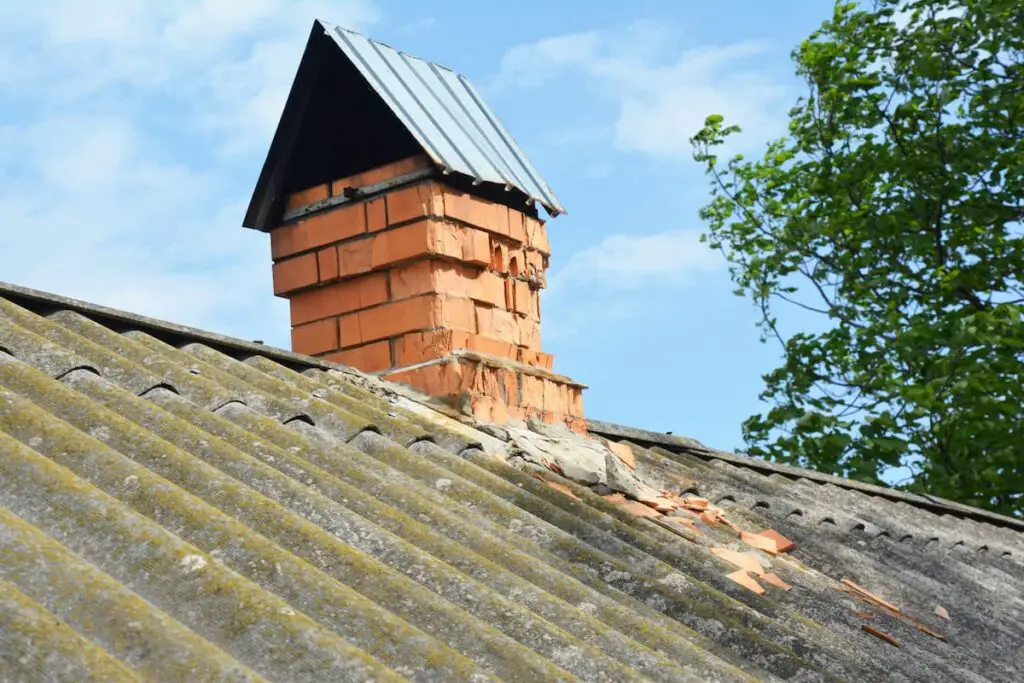As an Amazon Associate, we earn from qualifying purchases. We may also earn commissions if you purchase products from other retailers after clicking on a link from our site.
Nothing beats the coziness of unwinding by the chimney (or fireplace) on a chilly winter evening while sipping hot chocolate. Gas fireplaces have gained popularity due to their energy efficiency and reduced health risks. However, if the wind is blowing into your fireplace, you’re probably wondering how to stop it.
Here are 6 tips on how to stop the wind from blowing into your gas fireplace:
- Install a wind guard (chimney cap)
- Install a chimney cowl
- Use a chimney balloon
- Use a chimney flue blocker
- Seal cracked chimneys
- Seal leaking vent pipes
Although gas fireplaces are more efficient than traditional wood fireplaces, they also have several problems. This article will further discuss ways to stop the wind from blowing into your gas fireplace if you have it.

1. Install a Wind Guard (Chimney/Vent Cap)
Are you finding it hard to light your gas fireplaces due to wind gusts? If your vent is uncovered, this means that a lot of air is entering your gas fireplace and blowing out the flames. In that case, installing a wind guard is the best option.
Wind guards, also called chimney or vent caps, prevent wind from blowing into the vent while ensuring that your fireplace receives sufficient airflow. They also block the entry of small animals and moisture into the vent pipe.
A wind guard usually has a mesh around it and an aluminum cap on top. Aside from vents, chimneys are also a good place to install a wind guard. However, do this only if you have a gas fireplace.
2. Install a Chimney Cowl
A chimney cowl is an upgraded or reverting chimney cap. Like chimney caps, cowls can permanently fix wind problems on your gas fireplace. If you’re using a chimney, a chimney cowl will block wind from blowing into your fireplace.
A chimney cowl has rotating components that move according to the wind’s direction. (Think of it as a more complicated version of an anemometer.) The rotating cowl catches the wind and redirects it towards another direction, preventing it from getting into your chimney. Also, the cowl protects against any intruders and minimizes any noise from the blowing wind.
The only downside to chimney cowls is that they’re more expensive than chimney caps. All in all though, they’re a good investment considering how effective they are in blocking wind. To prevent squeaking sounds due to friction, you should also lubricate the cowl at least once a year.

3. Use a Chimney Balloon
If there’s heavy wind blowing into your gas fireplace through the chimney, a chimney balloon can come in handy. The fireplace plug creates an air seal by filling the space within your chimney. That keeps the wind from getting into the chimney while reducing the noise.
You can inflate the chimney balloon after inserting it into your chimney instead of the other way around. However, it’s better to inflate it halfway, place it inside the chimney, and fully inflate it from there.
Since a chimney balloon is a fireplace plug, you should remove it before lighting your gas fireplace, especially if your fireplace doesn’t have a vent. Doing this will prevent the build-up of carbon monoxide inside your home. Also, you need to inspect the balloon regularly to ensure that it’s not deflated or over-inflated.
4. Use a Chimney Flue Blocker
A chimney flue blocker is another type of fireplace plug that prevents excess air from getting through your chimney. It works best when you’re not using your fireplace and is easier to use than chimney balloons. They’re also available in varying shapes and sizes to suit your chimney.
A flue blocker has thick noise-insulating materials. It can also be made from custom-sized foam to fit in the chimney, keeping air from entering your home. A flue blocker also minimizes wind noise, prevents thermal leakage, and keeps bugs away.
5. Seal Cracked Chimneys
Many homeowners with gas fireplaces still use traditional chimneys. But if your gas fireplace has a vent, you only need the air flowing through the vent pipe for combustion. In this case, your chimney should be air-sealed to prevent unnecessary air from flowing into your fireplace.
Most homeowners use caulk to seal and insulate these chimneys. However, if the sealing isn’t done properly, there’ll be cracks or gaps on the chimney, letting cold air and wind inside. Consequently, this can cause lighting or wind noise problems with your gas fireplace.
If you suspect there’s air leakage in your fireplace, check your chimney immediately and consult an expert for help. A professional contractor will first remove the fireplace and determine whether the sealant used on your chimney is intact. If not, this could be why you’ve been experiencing cold air or wind noise from your fireplace.
The best solution to this problem is to reseal the chimney using fire-resistant caulk. You can then insulate the area by spraying it with a foam insulator. You can also opt for the insulation option only, as some people do.

6. Seal Leaking Vent Pipes
If the wind or cold air isn’t blowing from your chimney, it could be getting through gaps on the vent pipe. Vent pipes are essential components in vented gas fireplaces since they facilitate combustion and ventilation. However, when leaking, these pipes can cause draft problems.
Therefore, if you’ve confirmed that your vent pipe isn’t sealed properly, especially around the connection points, it needs resealing. Silicone caulk would be the best product to help close the gaps and air-seal the vent pipe. However, since this requires uninstalling the fireplace first, it’s best to have a professional contractor do this work for you.
Final Thoughts
Many homeowners have shifted to gas fireplaces to save energy and lower the risks to their health. However, wind problems (like wind noise and the gas flame going out) are inevitable in most households that have fireplaces. Therefore, it’s crucial to find effective solutions such as:
- Installing a wind guard
- Installing a chimney cowl
- Using a chimney balloon
- Using a chimney flue blocker
- Sealing cracked chimneys
- Sealing leaking vent pipes
